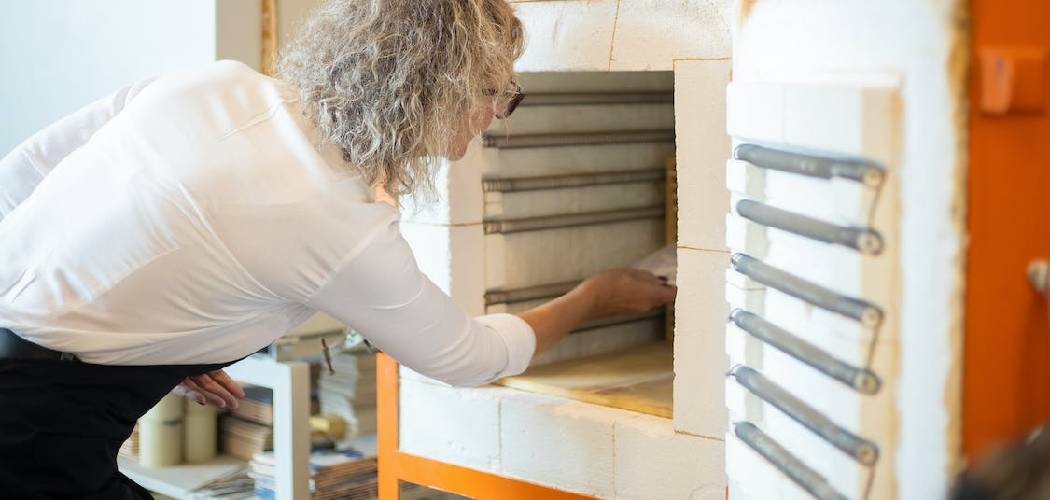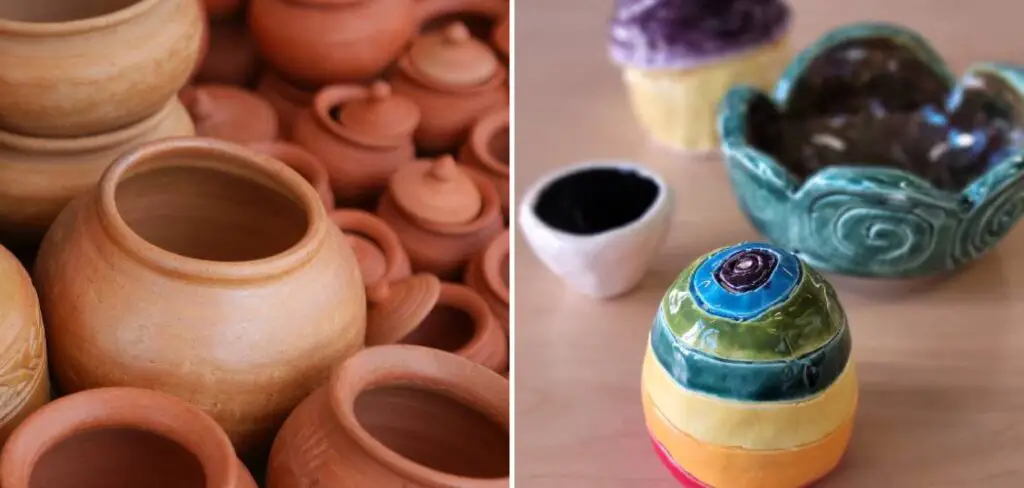Firing clay at home is an exciting venture that allows artists and pottery enthusiasts to take their creative projects from raw clay to a durable, finished piece. Whether you’re a beginner exploring the world of ceramics or an experienced potter seeking the convenience of firing at home, this guide will provide essential insights into how to fire clay at home. Firing clay involves transforming malleable clay into a hardened, permanent form through the application of high temperatures.
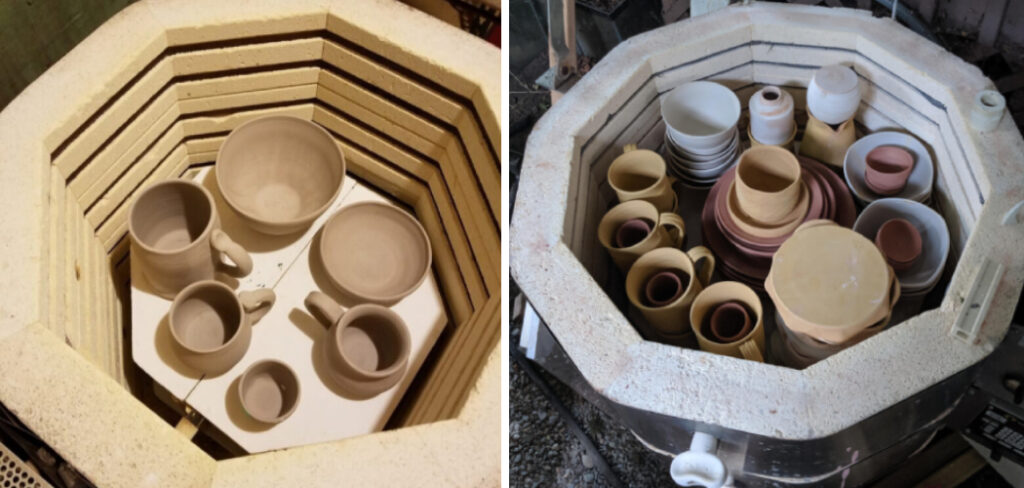
In this comprehensive article, we’ll delve into the step-by-step procedures for firing clay at home, discussing the types of kilns suitable for home use, the firing schedule, and essential safety measures. By mastering the art of firing clay in a home setting, you can bring your ceramic visions to life while enjoying the convenience of creating art in the comfort of your own studio.
Table of Contents
Importance of Firing Clay
Firing clay is the process of heating it to high temperatures in order to make it durable and usable for creating various objects. It is an important aspect of pottery making, as well as other forms of ceramics such as sculpture and tile making.
Firing transforms raw, soft clay into a strong and permanent material that can withstand daily use. The heat from firing causes the clay particles to fuse together, resulting in a hard, solid structure.
Without firing, clay would remain fragile and easily breakable. This process is essential for creating functional items such as plates, bowls, cups, and vases that can hold liquids without leaking or breaking under normal conditions.
But the importance of firing clay goes beyond just functionality. It also allows for endless possibilities in terms of artistic expression. Through different firing techniques and temperatures, artists are able to achieve various colors, textures, and finishes on their clay creations.
For example, low firing temperatures produce more porous clay that is suitable for decorative items or tiles, while high firing temperatures create a vitrified surface that is ideal for functional pieces such as tableware. And through the addition of certain materials, such as oxides or glazes, artists can achieve unique and stunning effects on their fired clay pieces.
Moreover, firing also helps to preserve the finished product. Once fired, clay becomes resistant to water and other elements that could potentially damage it. This makes it suitable for both indoor and outdoor use, making it a versatile material for a wide range of projects.
10 Ways How to Fire Clay at Home
1. Kiln Firing
Kiln firing is the most common method of firing clay at home. This involves using an electric or gas-powered kiln to heat the clay to a high temperature, usually between 1750 and 2400 degrees Fahrenheit. The clay is placed in the kiln and heated for a specific amount of time until it reaches its desired hardness. This method produces consistent results and can be used to fire both earthenware and stoneware clays.
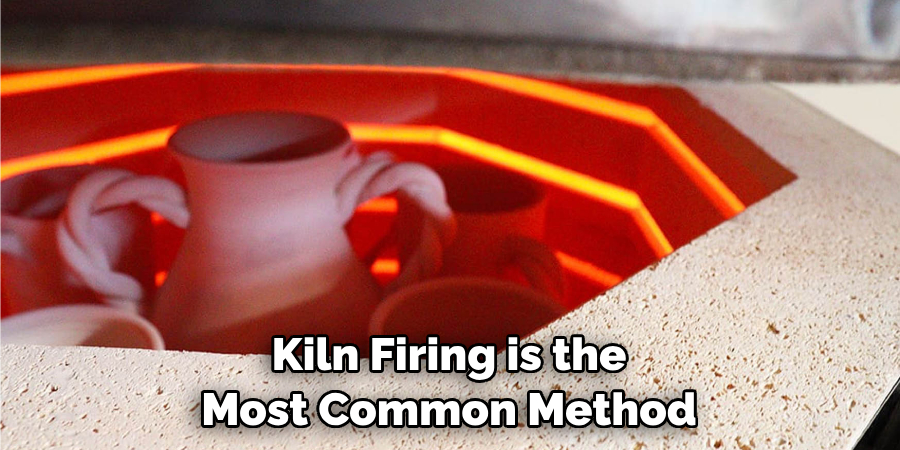
2. Raku Firing
Raku firing is a traditional Japanese firing technique that is often used by potters to create unique glazes and textures in their work. The process involves removing the piece from the kiln while it is still hot and placing it into an oxygen-reduced atmosphere such as sawdust or newspaper. This causes the glaze to crackle and gives it a unique look.
3. Pit Firing
Pit firing is an ancient technique that has been used for centuries by many cultures around the world. It involves digging a shallow pit in the ground, lining it with combustible materials such as dried leaves or straw, then adding pieces of clay that have been pre-fired in a kiln to produce different effects on the surface of the finished piece.
4. Saggar Firing
Saggar firing is similar to pit firing, but instead of placing combustible materials directly onto the pieces of clay, they are placed inside a saggar (a type of container made from ceramic or metal), which is then placed into a kiln with other saggars containing combustible materials such as sawdust, newspaper, wood shavings, etc. The smoke from these combustibles reacts with the glaze on the pieces, creating interesting patterns and textures on them when they are removed from the kiln after firing.
5. Barrel Firing
Barrel firing is another ancient technique that has been used for centuries by many cultures around the world, including Native American tribes in North America. It involves placing pieces of pre-fired clay into an old barrel along with combustible materials such as straw or wood chips before sealing up the barrel tightly and heating it over an open flame until all contents inside have melted together, creating unique patterns on each piece are removed from the barrel after cooling down completely.
6. Electric Kilns
Electric kilns are becoming increasingly popular among potters due to their low cost and ease of use compared to traditional gas-fired kilns or wood-fired kilns, which require more skill and experience to operate correctly without damaging your workpieces during the firing process. Electric kilns can be used for both earthenware and stoneware clays, allowing you to achieve different effects depending on how long you fire your pieces at different temperatures ranging from 1000 – 2400 degrees Fahrenheit (538 – 1315 Celsius).
7. Microwave Kilns
Microwave kilns are small portable electric kilns designed specifically for use in microwave ovens, which allow you to fire small pieces quickly without having to invest in costly equipment like larger electric or gas-fired kilns. They can reach temperatures up to 2000 degrees Fahrenheit (1093 Celsius), which makes them ideal for glass fusing projects as well as small-scale ceramic projects such as jewelry making.
8. Solar Kilns
Solar kilns are powered solely by solar energy, making them one of the most eco-friendly methods available for firing clay at home. They work by concentrating sunlight onto specially designed trays filled with pre-fired clay objects, which absorb heat energy from the sun’s rays, causing them to harden into their final shape after several hours of exposure. Solar kilns typically reach temperatures up to 1400 degrees Fahrenheit (760 Celsius), making them suitable only for earthenware clays .

9. Torch Fire Method
The torch fire method uses propane torches instead of electricity or gas fuel sources like other methods mentioned above. It requires very little equipment, so it’s ideal if you’re just starting out with pottery since all you need is some pre-prepared wax paper, some newspaper, a propane torch, safety goggles, gloves, tongs, etc. Torch-fired pieces usually have more muted colors than those fired in electric or gas-fired kilns, but this method can be a great way to practice basic techniques before investing money in expensive equipment like larger electric or gas-fired models.
10. Open Flame Method
The open flame method uses an open flame source such as a campfire, fireplace, charcoal grill, etc, instead of electricity or gas fuel sources mentioned above . This method requires extreme caution since there is no way to control the temperature easily, so there is always a risk of damaging your workpieces if you are not careful enough when handling flames near delicate ceramic objects . It’s best used by experienced potters who know how to handle fire properly without risking their safety.
Understanding Clay Types When Firing at Home
As mentioned earlier, there are three main types of clay used in pottery: earthenware, stoneware, and porcelain. Each type has its own unique characteristics that make them suitable for different purposes. In this section, we will dive deeper into each type of clay and understand their properties when it comes to firing at home.
Earthenware
Earthenware is the most common type of clay used in pottery. It is a low-fire clay that is easy to work with and has a wide range of colors. It is also the most porous of the three types, making it great for absorbing glazes and creating intricate designs. Due to its lower firing temperature (around 1830°F), earthenware can be fired at home using a kiln or even in a bonfire with the appropriate precautions.
Stoneware
Stoneware, on the other hand, is a high-fire clay that is more durable and less porous than earthenware. It has a higher firing temperature (around 2200°F) which makes it stronger and able to withstand higher temperatures. Stoneware is often used for functional pottery such as plates, bowls, and mugs. However, due to its higher firing temperature, it is not recommended for home firing unless you have a proper kiln.
Porcelain
Porcelain is known as the “white gold” of clay due to its delicacy and translucency when fired. It has the highest firing temperature (around 2400°F) which allows it to become vitrified and non-porous. This makes porcelain perfect for creating delicate objects such as vases, figurines, and fine china. Firing porcelain at home is not recommended unless you have a high-fire kiln with precise temperature control.
Now that we have a better understanding of the different clay types, it is important to note that each type requires different techniques when firing at home. Earthenware can be fired in a bonfire, while stoneware and porcelain require a kiln with precise temperature control. It is also crucial to follow safety guidelines when firing at home, as clay dust and fumes from glazes can be harmful if not properly ventilated.
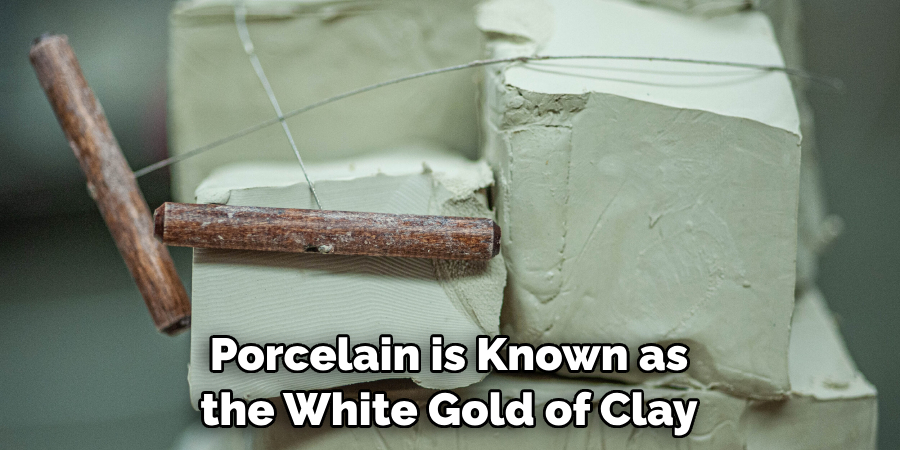
Conclusion
With the help of these steps, you can now fire clay at home no matter your experience level or access to materials. Whether you’re into pottery, sculpture, or just dabble in clay molds, firing your pieces brings them a step closer to completion. Home kilns and a little know-how are all that stand between you and that finished work of art.
Keep practicing and learning by tapping into the resources around you – community potters or artisans with a shared knowledge could be invaluable in helping you take your work in new directions! If you’re looking for more ways on how to fire clay at home, online tutorials are always ready as well to aid you in every step of this wonderful process. So keep creating and trying, and see where it takes you. Who knows what beautiful works of art may come about?
